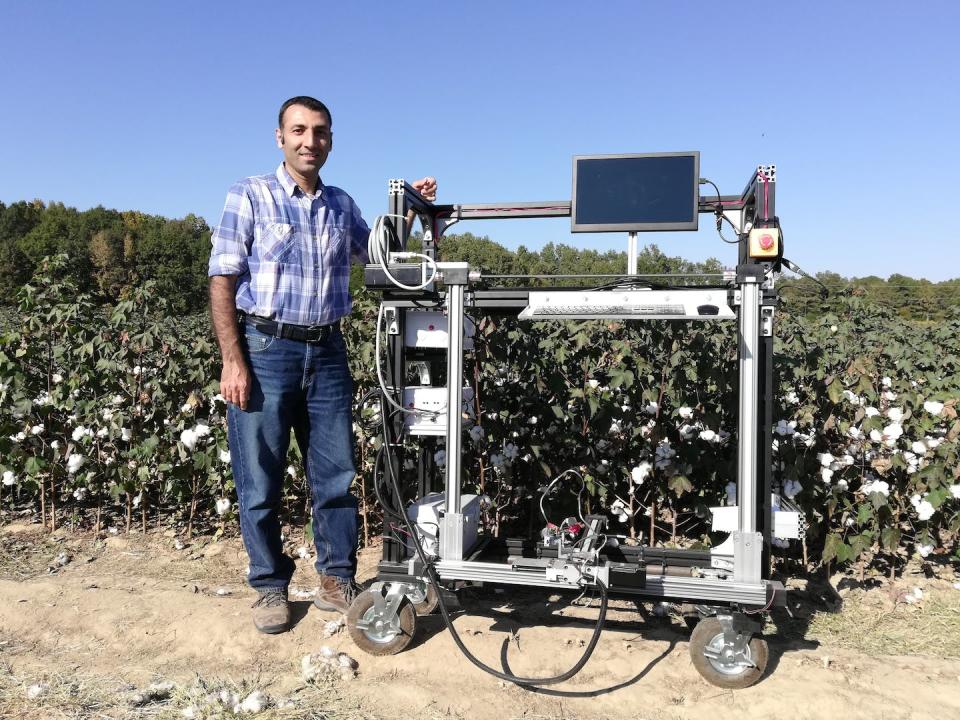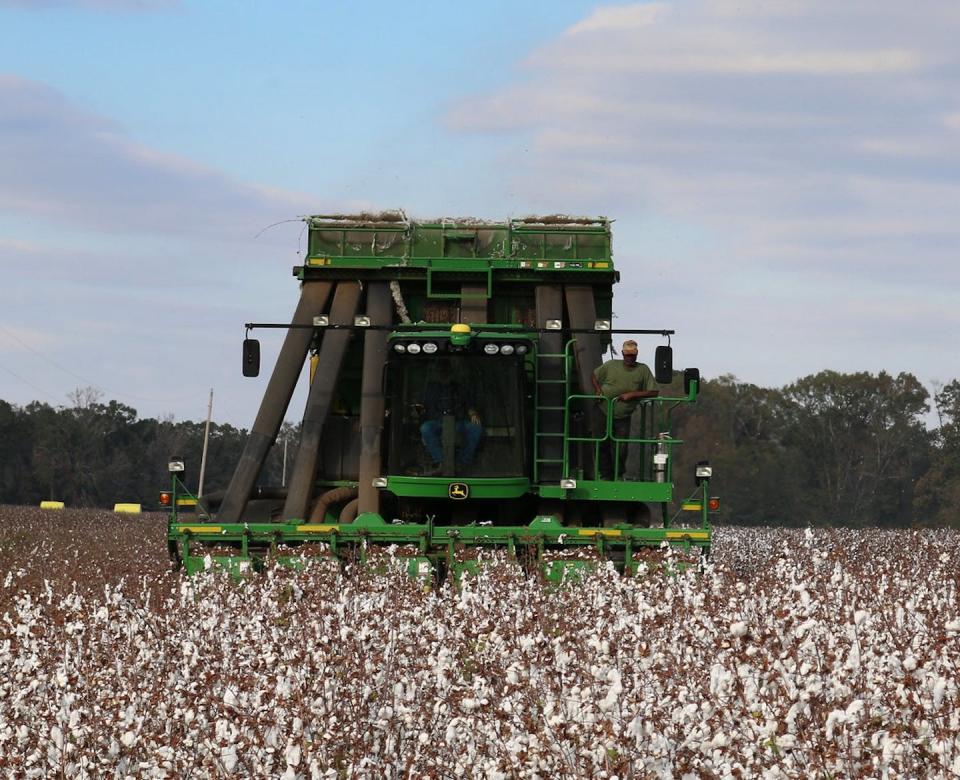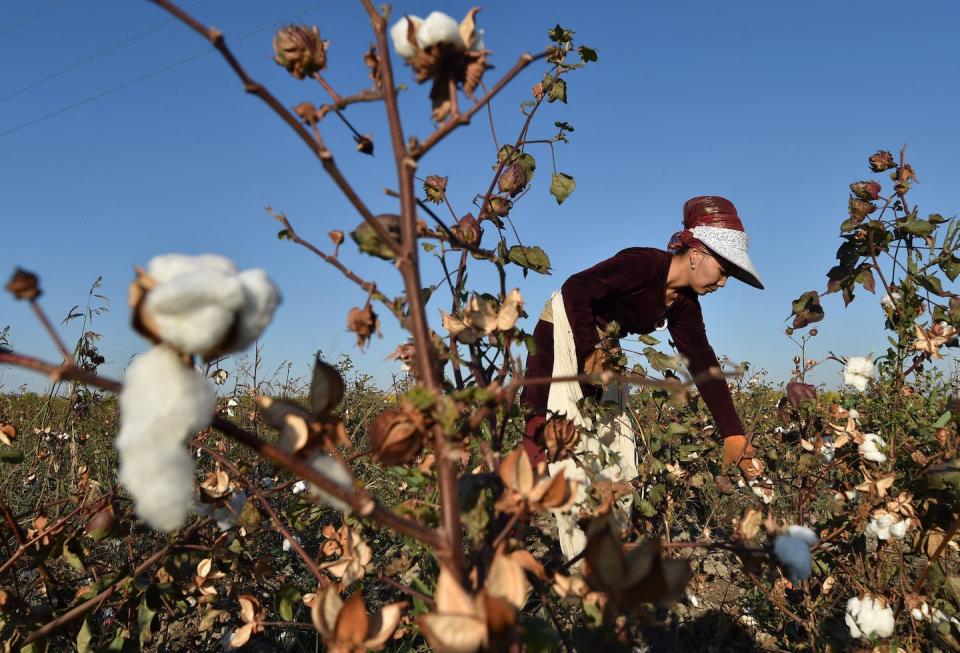Cotton is one of the most valuable crops grown in the US, with a crop value of approximately $7 billion per year. It is grown in a crescent of 17 states stretching from Virginia to California and is used in virtually every type of clothing, as well as medical supplies and household items such as upholstery.
Cotton grows in a hard, fibrous covering called a boll. About 100 days after planting, the bulbs ripen and split open, revealing thousands of fluffy white fibers inside. Each bulb contains 20 to 40 seeds containing fibers. That is why the fruit of the cotton plant is called seed cotton.
Picking cotton by hand, as is still done in some major producing countries, is a painstaking task. Workers have to stoop to reach the bulbs and can hurt their hands on hard, dry parts of the plants. To harvest the seed cotton, they must grasp and twist it to separate it from the boll without leaving fibers behind.
Beginning in the 1930s, cotton farmers in the US switched from manual labor to large, heavy harvesting machines. Now the industry is entering a new phase that promises to be more efficient and accurate.
I am an engineer and have almost 20 years of research experience in the field of agricultural machinery. My current focus is on agricultural robotics and automation. During my Ph.D. program at Mississippi State University, I collaborated with Alex Thomasson, head of the Department of Agricultural and Biological Technology and the Agricultural Autonomy Institute, to develop a robotic cotton harvester that picks cotton with less damage to the product and the soil on which it grows.

Why use robotics?
Cotton farmers have economic, environmental and agricultural reasons for wanting a better crop option. Traditional mechanical harvesters can be up to 4.5 meters long and weigh more than 30 tons. They remove cotton effectively without damaging the plants, but can also cause problems.
One problem is long-term exposure to fiber. Cotton balls do not all ripen at the same time; the first open bulbs in a field can wait as long as 50 days before being picked, until more bulbs ripen around them.
Another challenge is that harvesters compact the soil as they roll over it. This makes it more difficult for water and fertilizer to penetrate the plant’s roots. And the machines cost about $1 million each, but are only used for two to three months a year.
Robotics is a potential solution that farmers are already using for other crops, such as fruit and vegetables. Harvesting robots use cameras and sensors to detect when crops are ready to pick and can remove them without damaging the plant.
For cotton, robotics offers a more targeted picking of bulbs ready for harvesting. It produces better quality cotton fibers by picking seed cotton as soon as the bolls open, without exposing it to the weather. The robot focuses on the seed cotton and avoids touching other parts of the plant.
With robotic picking, cotton farmers do not have to use defoliants to remove leaves from the plants before harvest, which is common today. And small, agile robots don’t compress the soil as they move over it, so they help maintain soil health.


A bio-inspired ‘picking hand’
Our work focuses on designing an end effector for robotic cotton harvesting. An end effector is a robotic hand that allows the robot to interact with other objects. Our version is a three-finger version, designed for the delicate and efficient cotton picking. It draws inspiration from nature and mimics the hunting ability of a lizard.
Each finger is a 3D printed structure that contains a moving strap with pins attached to it. The pins help the hand grasp the seed cotton and pull it in. Like a lizard stealing prey with its sticky tongue, the three fingers of our end effector gently approach the seed cotton. On contact, the cotton fibers stick to the machine’s fingers, just like an insect sticks to a lizard’s tongue.
Then the hand quickly withdraws, just like the lizard’s tongue. The end effector continues to work to ‘swallow’ the seed cotton and extract it from the plant. As the harvester picks and transfers seed cotton from the plant, the end effector touches parts of the cotton ball containing the remaining seed cotton several times to pick as much as possible.
To efficiently pick cotton, our robot must do three things: detect bulbs ready for harvest, determine where exactly they are in three-dimensional space, and pick the cotton.
The robot uses a deep-learning algorithm that we have trained to recognize open bulbs on cotton plants. It uses a stereo vision camera to calculate their 3D spatial coordinates, which transfers them to the robot arm. A control algorithm checks each cotton ball to ensure that the robot picks as much seed cotton as possible.
Testing and results
So far, we have tested the robotic cotton harvester in the laboratory and on cotton fields. The detection system found 78% of the ripe cotton balls; the localization system calculated 3D coordinates for 70% of the detected spheres; and the picking system successfully harvested 83% of these bulbs. In total, the robot picked about 50% of the cotton balls within its reach.
Our harvester picked cotton at a speed of 8.8 seconds per boll. If we can reduce this required time to 0.3 seconds and increase the efficiency of the robot to pick at least 90% of the cotton balls it can reach, by optimizing the system and adding more arms to a robot , a fleet of 50 robots could harvest a fleet of cotton. as fast as a mechanical harvester, with a comparable yield.
To improve the overall performance of the robot, we plan to apply better artificial intelligence algorithms, improve our system’s camera, and add an additional degree of movement to the robot arm – for example by rotating the end effector – to increase its agility.


We see great potential for our robot in major cotton-producing countries such as China, India, Pakistan and Uzbekistan, where cotton is currently picked by hand, often by women and children and sometimes under poor conditions. One way to make this technology available to small farmers in low-income countries would be to create smaller, semi-autonomous robots that require fewer sensors. Producing higher value cotton with less damage to plants and soil could improve the lives of millions of people who make a living growing this global crop.
This article is republished from The Conversation, an independent nonprofit organization providing facts and trusted analysis to help you understand our complex world. It is written by: Hussein Gharakhani, Mississippi State University
Read more:
Hussein Gharakhani receives funding from Cotton Incorporated, a nonprofit research and marketing company working to improve cotton demand and profitability.